
Richard Butler | Exclusive Report by ERIN HANDLEY & EDWINA SESELJA of ABC NEWS | 8TH JUNE, 2023
China’s presence in the Pacific has been thrown into the spotlight following a controversial pact with Solomon Islands.
It was followed by an island-hopping tour by China’s Foreign Minister to shore up support for a sweeping deal with several nations, a leaked draft of which included security and policing.
While the deal has been shelved for now, Foreign Minister Wang Yi signed a raft of agreements with individual countries — but the details have not been made public. But Beijing’s involvement in the Pacific is nothing new.
For years, China has been building its presence in the region, inking deals on everything from airport runways, roads and stadiums to education and fishing. Beijing scored significant diplomatic victories in 2019, when Solomon Islands and Kiribati switched their diplomatic allegiance from Taiwan to China.

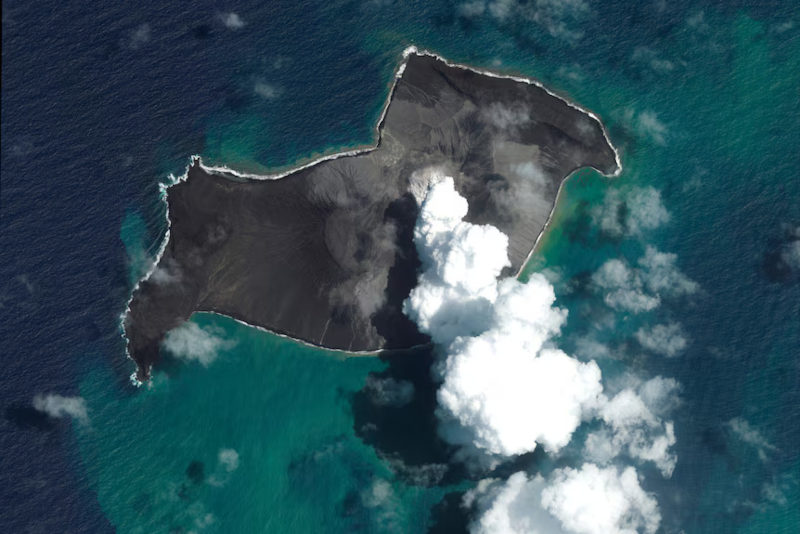
Palau, Nauru, Tuvalu and Marshall Islands still maintain diplomatic ties with Taiwan. China’s growth and its ambitious foreign policy, including Belt and Road Initiative (BRI) projects in the Pacific, have seen fresh funding for infrastructure flow to the region.
Despite that, Australia remains the largest donor to the Pacific and China is becoming less generous. Some observers fear Beijing’s aim is to fund infrastructure projects in key strategic locations that will later “enable Chinese military access” at air and sea ports.
But others point out that several countries use money to gain power and influence and China’s investment in roads, schools and hospitals also benefits those on the ground. Mr Wang last week highlighted that “China is not a newcomer” in this arena.
“Some have been questioning why China has been so active in supporting Pacific Island countries,” he said.
“My advice for those people is don’t be too anxious and don’t be too nervous.”
SOLOMON ISLANDS
While much attention has been paid to the leaked security pact with China which was signed in April, it’s not the only agreement Solomon Islands has with the superpower. Soon after Solomon Islands switched recognition to China, Honiara signed six agreements with Beijing.
This included a deal — leaked more than two years later — for one of China’s largest defence and aerospace companies to upgrade almost three dozen airstrips in Solomon Islands, as part of an ambitious plan to transform the country into an “aeronautical hub” for the region.

In exchange, Solomon Islands was to purchase six aircraft from a Chinese state-owned company, but it doesn’t appear either side pushed ahead with the initiatives in the MOU after signing it.
One project that is underway is the multi-million-dollar national sports stadium being bankrolled and built by Beijing in Honiara. Tess Newton Cain, from Griffith University’s Pacific Hub, said the project was designed for Solomon Islands to host the 2023 Pacific Games.
She said it was significant because the government was pinning its post-COVID economic recovery on the Games.
“They are a real focus of national pride, economic activity … and tourism,” she said.
“To say it’s just a vanity project possibly betrays a lack of understanding as to how important those events are for Pacific countries themselves.”
Details of other agreements between China and Solomon Islands, including those signed during Mr Wang’s visit, aren’t clear. The ABC has approached the Solomon Islands Ministry of Foreign Affairs and External Trade for comment.
KIRIBATI
During Mr Wang’s visit, Kiribati signed 10 documents to “elevate cooperation” on the BRI, climate change, livelihood projects, disaster risk reduction, road infrastructure, tourism, the dispatching of medical teams, COVID-19 supplies and marine transportation for the Line Islands.
Additionally, Global Times, an English-language Chinese state media tabloid, reported cooperation agreements on trade, renewable energy and customs inspection were signed. The Kiribati government said it would release details of the visit later.
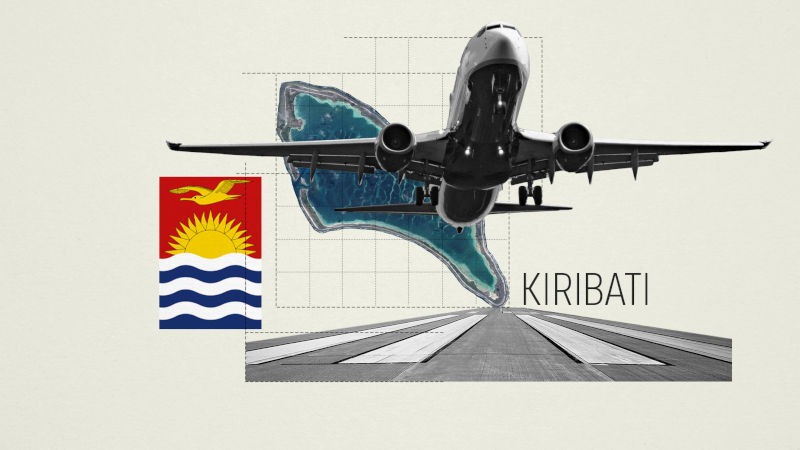
When the Chinese delegation touched down in Kiribati last month, the atoll nation was focused on trade and tourism opportunities with China and was not keen on a security arrangement, according to a Kiribati official who was not authorised to speak to the media.
While there had been much speculation over a controversial plan to reopen a protected marine zone for commercial fishing, and to upgrade a World War II-era airstrip on Canton Island, the official said these were not among the agreements due to be signed.
Since switching diplomatic recognition from Taiwan to Beijing in 2019, Kiribati has said it would open the 400,000 square-kilometre Phoenix Islands Protected Area — one of the world’s largest marine conservation zones — to fishing.
Western critics have expressed concern the Chinese plan to upgrade the airstrip would offer Beijing a foothold about 3,000km south-west of the US state of Hawaii.
Kiribati said it would be a non-military project designed to bolster tourism.
PAPUA NEW GUINEA
Papua New Guinea has had diplomatic ties with China since 1976, a year after becoming independent from Australia. It’s the largest recipient of both Chinese and Australian aid. But some projects China has promised and not yet delivered.
One is a $US4.1 billion ($5.7 billion) road project, which would upgrade 11 roads and connect all regions of the country.
“If it eventuates, it would be the largest Chinese aid project in Pacific history,” said the Lowy Institute’s Alexandre Dayant. Another is the Ramu 2 hydropower plant, to which China has committed a potential $US920 million — if it goes ahead.

“China’s involvement in the Pacific through development support serves a double purpose,” said Mr Dayant, who has mapped development funding flows in the Lowy Pacific Aid Map.
“It is also important to mention that China isn’t the only one using aid policies as leverage for favours. Australia’s aid program, like New Zealand’s and other western countries, often comes with strings attached.” Another aim of China’s engagement in the region is to garner support on the world stage.
Dr Newton Cain said investing in development needs meant China — and other donors — could build political capital when they wanted support at the United Nations, for example. In 2020, PNG backed China at the UN over its controversial national security law in Hong Kong.
“It would be naive to think that China does this simply for altruistic purposes, just as it would be naive to think anybody else does it simply for altruistic purposes,” she said.
“First, it answers a profound development need from the region … However, China’s support isn’t free and understanding its intent is important.
VANUATU
Graeme Smith, senior fellow at the ANU’s Department of Pacific Affairs, said Solomon Islands was “at the centre of this panic about Chinese bases” now but a few years ago, that space was held by Vanuatu.
Vanuatu’s former ambassador to China, Sela Molisa, recently told the ABC’s Pacific Beat program the 83-island nation desperately needed several development projects, including airports, roads and wharves.
It was a wharf that raised eyebrows back in 2018. The $114 million Chinese-funded project is deep enough for cruise ships but also naval vessels to dock. Reports swirled that Beijing was seeking to build a permanent military base in the Pacific and was eyeing Vanuatu. Vanuatu’s Foreign Minister Ralph Regenvanu strenuously denied it at the time.
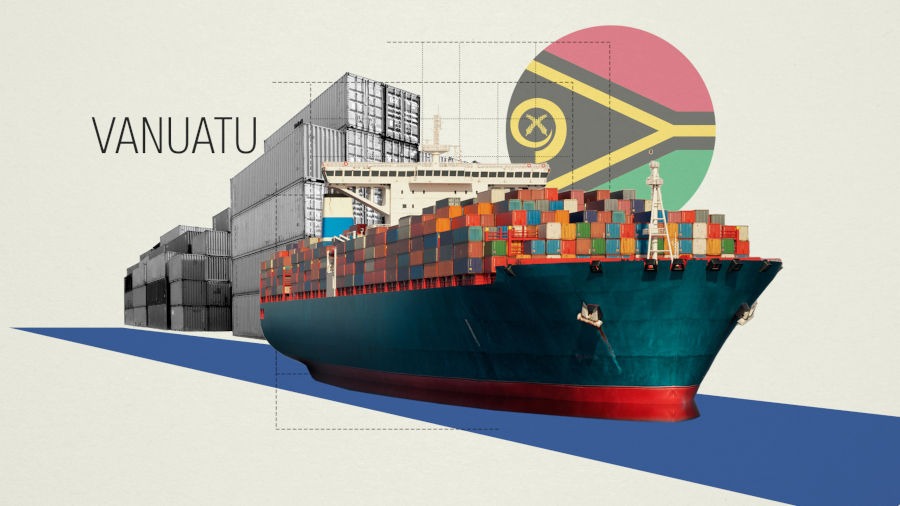
“No-one in the Vanuatu government has ever talked about a Chinese military base in Vanuatu of any sort,” he said.
“We are a non-aligned country. We are not interested in militarisation, we are just not interested in any sort of military base in our country.”
Vanuatu government spokesperson Fred Vurobaravu reiterated there was no plan for a Chinese military base in Santo – which was a US naval base during World War II — “and that position will remain unchanged”.
He said it was one of the largest wharves in the South Pacific and Vanuatu was fortunate to have it. Dr Newton Cain said talk of a Chinese military base in the region was speculation.
“There isn’t actually any evidence of that yet. We haven’t seen a military base being established anywhere in the Pacific,” she said.
“That may happen. It may happen in the next five years. It may happen in the next 10 years. It may never happen.”
She said Pacific leaders had made it clear that what threatened their security was not China, but climate change, and they did not want to be caught up in other nations’ geopolitical competition.
“Pacific leaders have said, ‘We don’t want to be used as pawns on a chessboard. We’re not a prize to be fought over.'”
SAMOA
Another project causing some anxiety was a proposed Chinese-backed port in Vaiusu Bay, Samoa. Samoa’s Prime Minister Fiamē Naomi Mata’afa scrapped the $128 million project shortly after winning the 2021 election, saying there were “more pressing projects”.
She said the level of Samoa’s indebtedness to China had been a concern for voters. As of last year, China was the largest lender to Samoa, which owed Beijing about 40 per cent of its total debt, around $200 million.
A Reuters analysis in 2018 found China’s lending to the Pacific went from nearly zero to $US1.3 billion in a decade, and that Chinese loans accounted for around half of the external debt burden in Vanuatu and Tonga.
Vanuatu’s government spokesperson told the ABC he could not disclose the current debt owed to China, but said some past loans had been forgiven. Mr Dayant said that China had not engaged in deliberate debt trap diplomacy yet and while indebtedness was a risk for Pacific economies, the reality was more nuanced.
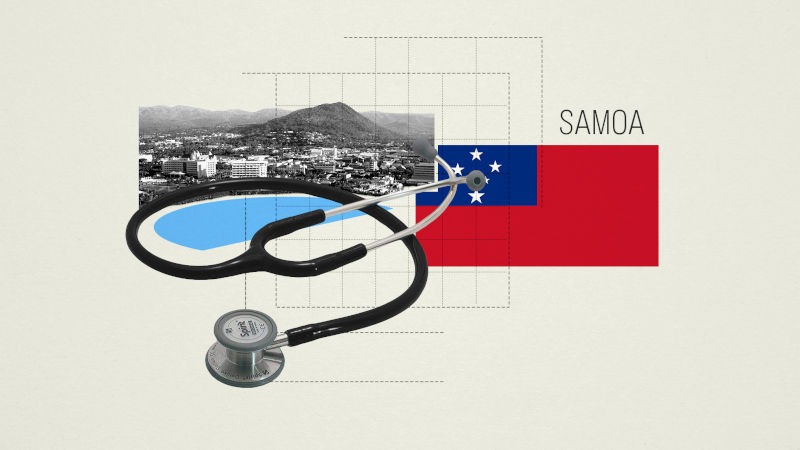
At the same time, the sheer size of Chinese lending meant that it was an intense share of smaller countries’ GDPs, and he said that if China wanted to avoid accusations of debt entrapment, it should change its approach to be more sustainable.
Pacific nations have “risen to the complexity that is Chinese lending”, he added.
“Less and less Chinese loans are signed by PICs Pacific Island countries, mostly because they have limited fiscal space available after a pandemic that is still having a big impact on the region,” he said.
But another key area of Chinese support to Samoa — and to the Pacific more broadly — is health. Beijing said it had dispatched 600 medical staff to Pacific nations, provided 600,000 doses of vaccines and more than 100 tonnes of medical supplies. For Samoa, that includes around half a million US dollars in COVID assistance for masks and other PPE.
But medical assistance also pre-dates the pandemic, with medical training in China and almost $US1 million in medical equipment for a Samoan hospital, including an X-ray machine, ultrasound machines and ear, nose and throat diagnostic equipment.
TONGA
One of the most significant projects China has funded in the Pacific is the rebuilding of the CBD in Nuku’alofa, Tonga’s capital, following pro-democracy riots in 2006. Beijing provided a loan of more than $US100 million for the rebuild.
In 2020, Reuters reported that almost two-thirds of Tonga’s external debt of $US186 million was owed to China, according to budget statements.
But China has also highlighted its aid and relief efforts in the Pacific following cyclones and natural disasters. One of the most shocking incidents was the eruption of the Hunga Tonga-Hunga Ha’apai volcano — the biggest explosion since Krakatoa in 1883.
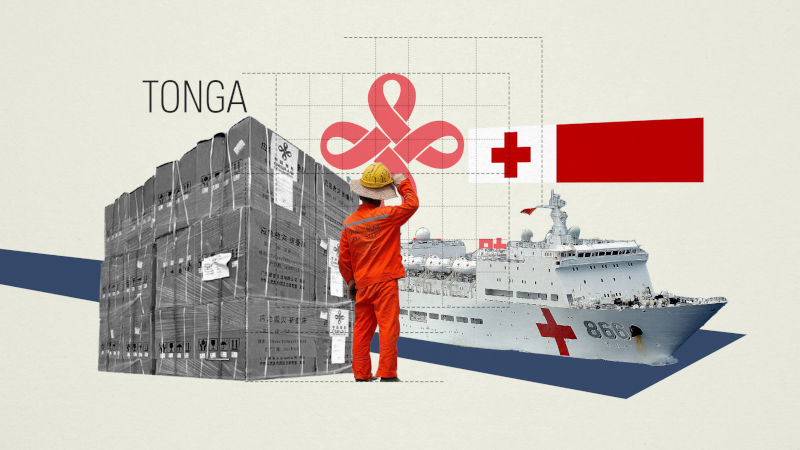
It triggered a tsunami that damaged large swathes of Tonga and left much of the country covered in volcanic ash, and also severed an underwater communications cable.
“The Chinese government was highly concerned and acted immediately, making China the first country in the world to provide assistance to Tonga,” China’s Foreign Ministry said.
Tonga said China had donated $US1.3 million in cash and relief and restoration assistance since the eruption, while the Australian government said it delivered a total of 370 tonnes of emergency supplies and pledged a $16 million package for Tonga’s long-term recovery.
As Mr Dayant from the Lowy Institute points out, Pacific Island countries’ vulnerability to national disasters makes it one of the most aid-dependent regions in the world and its location in a highly-contested ocean makes it a focus of strategic thinking.
FIJI
When Frank Bainimarama seized control of Fiji in a military coup in 2006, Western sanctions and a diplomatic deep freeze swiftly followed.
But China threw a lifeline to Fiji — its pledged aid skyrocketed and its diplomatic ties deepened. Australia re-engaged after elections were held in 2014. Mr Bainimarama won and has since transformed into a leading voice on the climate crisis facing the Pacific.
“Geopolitical point-scoring means less than little to anyone whose community is slipping beneath the rising seas,” he said in a press conference last week after it became clear a consensus had not been reached on the sweeping China-proposed agreement.
While China — the most populous country — is the world’s biggest polluter, some of its involvement in the Pacific has focused on climate change.
Earlier this year, Beijing unveiled the China-Pacific Island Countries Climate Action Cooperation Centre. China also provided funds to Fiji in response to a series of cyclones, as well as $US1.4 million to build a sea wall to protect against rising ocean levels.
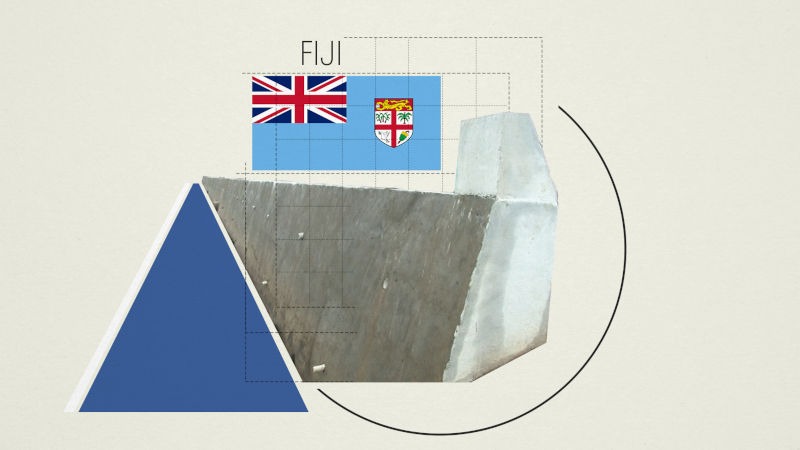
“Now, they are well established in the Pacific. Chinese aid has done its job,” Mr Dayant said. He said Chinese aid also provided a vehicle to implement state-owned enterprises in the region.
Dr Newton Cain added that the state-owned enterprises had “evolved and modified” to become part of the business community in some countries. That included bidding for local contracts, workers living in the country and sending their children to school there, and supporting local football teams.
“They are becoming part of the environment in which they work,” she said.
Some Fijians told the Associated Press they saw a benefit to Chinese foreign investment in the country, as long as it uplifted people. One of them, Georgina Matilda, said working for Chinese infrastructure company China Railway meant she could put food on the table for her children.
Dr Newton Cain said there was a move away from donors flying in their own workers solely, as countries were increasingly concerned about whether infrastructure projects would lead to local jobs.
“These big Chinese companies are recognising that is something that people are watching,” she said.
“In small economies, a couple of big road-building projects … you would expect there to be significant spillover effects, so that … it is actually injecting some cash into the local economy.”
NIUE
Niue’s Premier and Foreign Minister Dalton Tagelagi met with Mr Wang via a video call last month, and the Chinese government said both sides pledged to “deepen bilateral cooperation including on the Belt and Road Initiative”.
It said the two countries had signed documents that would boost cooperation on infrastructure and broadcasting as well as “expand the blue economy and the biopharmaceutical corporation” — but what this looked like in reality was unclear.
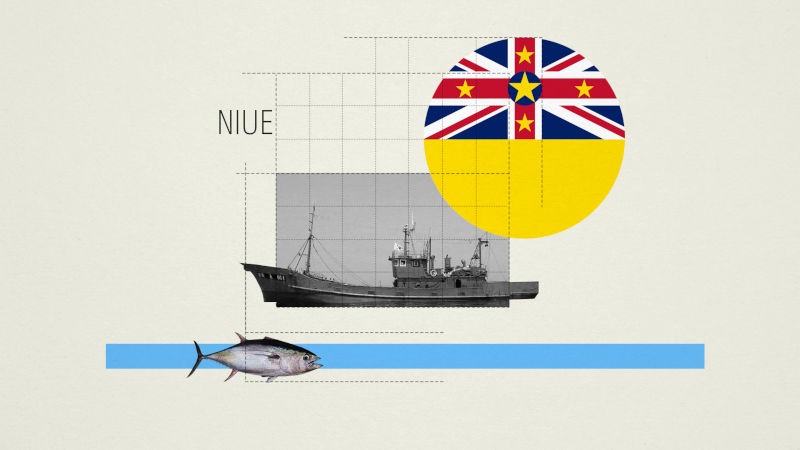
Niue is a self-governing state in free association with New Zealand and has had diplomatic relations with China since 2007 — its second-largest trade partner.
Niue has a population of approximately 1,600 and a landmass of just 261 square kilometres but lays claim to an exclusive economic zone (EEZ) of the Pacific Ocean that’s about the size of Vietnam. While little is known about the ins and outs of agreements between Niue and China, Dr Smith said China’s efforts were likely aimed at keeping Niue onside.
“To some extent … it’s just about Taiwan,” he said.
“Territorial integrity is still the main driver of their strategy in the region … reducing Taiwan’s diplomatic spaces there has always been right up there.
“So you paid the minimum to keep them in your camp.”
COOK ISLANDS
Cook Islands is reported to have a number of projects with China assisting the island nation in a range of areas including public services, education and the fishing industry.
Among them are public works including the refurbishments of a Chinese-constructed Ministry of Justice building, a police headquarters and a sports arena, which Denghua Zhang, a research fellow at ANU’s College of Asia and the Pacific, said were similar to China’s projects around the region.
All three were built with Chinese loans between 2004 and 2009, but fell into disrepair and were built with materials “inappropriate for the Cook Islands tropical environment”, according to the Lowy Institute. China has agreed to fund the repairs.

There’s also the China-New Zealand-Cook Islands water supply project (Te Mato Vai) to upgrade the supply network on the main island of Rarotonga that launched in 2014.
As Dr Zhang wrote in a 2015 paper, the project — led by a Chinese company and estimated to cost about $NZ60 million ($54 million)— was to be partly funded by a grant from New Zealand and a concessional loan from China.
The “triangular” aid project also meant New Zealand could learn about China’s aid delivery and ensure the concessional loan from China was well managed, the paper said. But after the completion of stage one in 2017, a leak was detected and an independent review found that 17 kilometres of pipeline needed replacing.
Stage two of the project is being completed by construction company McConnell Dowell, a subsidiary of a company called Aveng which has its headquarters in South Africa.
FEDERATED STATES OF MICRONESIA
Federated States of Micronesia (FSM) is one of two countries in the North Pacific to recognise China, with Palau, Nauru and Marshall Islands still diplomatically tied to Taiwan.
It was David Panuelo, President of FSM, who wrote to other Pacific leaders warning that China’s proposed deal was “a smokescreen for a larger agenda”.
“Despite our ceaseless and accurate howls that climate change represents the single most existential security threat to our islands, the Common Development Vision threatens to bring a new Cold War era at best, and a world war at worst,” he wrote.

FSM is in a compact of free association with the US. That gives the US control over airspace and waters in exchange for the US providing funding, defence and access to US social services for Micronesians.
At the same time, FSM has been a beneficiary of Chinese money, with more than $US100 million funnelled into the country over 30 years. The Lowy Pacific Aid Map shows China has committed $US5 million per year from 2017 to 2025, as well as a $US2 million cash grant to the country’s trust fund.
Dr Zhang has noted that FSM has a policy of not taking loans, helping it to avoid debt risk. China has also funded roads, bridges and a state government complex in the country.
“What we do in the island country is to build roads and bridges, not to increase military presence,” Mr Wang told his FSM counterpart last week.





